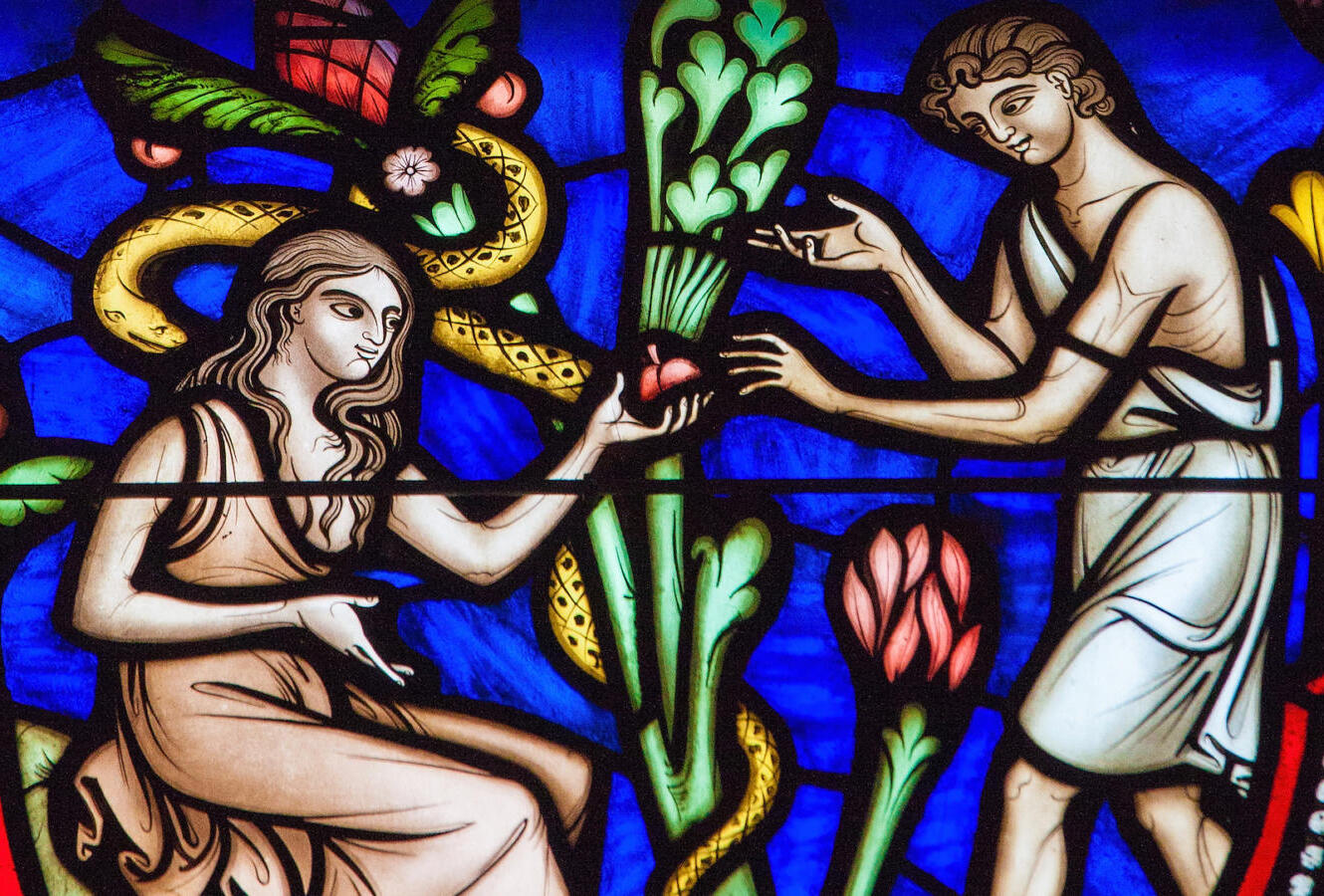
Adam and Eve are central figures in many religious traditions, especially in Christianity, Judaism, and Islam. Their story, found in the Book of Genesis, tells of the first humans created by God. Did you know that Adam's name means "man" or "earth" in Hebrew, symbolizing his creation from the ground? Eve, on the other hand, is often associated with life and motherhood. Interestingly, the tale of Adam and Eve has influenced countless works of art, literature, and even modern culture. From the forbidden fruit to the serpent, their narrative is rich with symbolism and lessons. Curious about more intriguing details? Dive into these 33 fascinating facts about Adam and Eve to uncover more about their lives, significance, and lasting impact on history and culture.
Key Takeaways:
- The story of Adam and Eve from the Bible is about the first humans, their paradise home, and the consequences of disobedience, shaping beliefs and inspiring art and literature throughout history.
- Adam and Eve's story is rich with symbolism and interpretations, sparking debates about morality, free will, and human nature, while also inspiring countless works of art and literature.
The Origin of Adam and Eve
Adam and Eve are central figures in many religious texts, especially in the Bible. Their story is often seen as the beginning of humanity.
- Adam and Eve are considered the first humans created by God according to the Bible's Book of Genesis.
- The name "Adam" means "man" or "mankind" in Hebrew, while "Eve" means "living" or "life."
- God created Adam from dust and breathed life into him, making him a living being.
- Eve was created from one of Adam's ribs to be his companion, symbolizing the close relationship between man and woman.
The Garden of Eden
The Garden of Eden is described as a paradise where Adam and Eve initially lived. It was a place of perfect harmony and abundance.
- The Garden of Eden was located in the East according to the Bible, though its exact location remains a mystery.
- Four rivers flowed out of Eden: Pishon, Gihon, Tigris, and Euphrates.
- The garden contained the Tree of Life and the Tree of the Knowledge of Good and Evil.
- Adam and Eve were tasked with tending the garden and taking care of its plants and animals.
The Temptation and Fall
The story of Adam and Eve takes a dramatic turn with the introduction of temptation and the fall from grace.
- A serpent tempted Eve to eat the forbidden fruit from the Tree of the Knowledge of Good and Evil.
- Eve then gave the fruit to Adam, who also ate it, leading to their disobedience of God's command.
- Their eyes were opened, and they realized they were naked, feeling shame for the first time.
- God punished the serpent, Eve, and Adam for their disobedience, leading to various curses.
Consequences of the Fall
The fall of Adam and Eve had significant consequences for them and all of humanity according to religious texts.
- Adam and Eve were expelled from the Garden of Eden, losing their paradise home.
- Eve was cursed with pain in childbirth and a desire for her husband, who would rule over her.
- Adam was cursed to toil and labor for food from the ground, which would now produce thorns and thistles.
- Death entered the world as a result of their disobedience, affecting all their descendants.
Symbolism and Interpretations
The story of Adam and Eve is rich with symbolism and has been interpreted in various ways throughout history.
- Adam and Eve's story is often seen as an allegory for the human condition and the struggle between good and evil.
- The serpent is commonly interpreted as Satan or a symbol of temptation and deceit.
- The forbidden fruit is often depicted as an apple, though the Bible does not specify the type of fruit.
- The story has been used to explain the origin of sin and the need for redemption in Christian theology.
Cultural Impact
Adam and Eve's story has had a profound impact on culture, art, and literature.
- The story has been depicted in countless works of art, from paintings to sculptures.
- Literature has often referenced Adam and Eve, exploring themes of innocence, temptation, and fall.
- The concept of "original sin" originates from their story, influencing Christian doctrine and beliefs.
- Their story has been adapted into various forms, including movies, plays, and even video games.
Modern Perspectives
Modern interpretations of Adam and Eve's story vary widely, reflecting diverse beliefs and understandings.
- Some view the story as a literal historical account, while others see it as a myth or allegory.
- The story has been analyzed from psychological perspectives, exploring themes of guilt, shame, and human nature.
- Feminist interpretations often critique the portrayal of Eve, examining issues of gender and power.
- The story continues to inspire debate about morality, free will, and the nature of humanity.
Fun and Lesser-Known Facts
Beyond the well-known aspects, there are many intriguing and lesser-known facts about Adam and Eve.
- Adam is sometimes considered the first prophet in Islamic tradition, with Eve known as Hawwa.
- Some Jewish traditions suggest Lilith was Adam's first wife before Eve.
- The story of Adam and Eve has parallels in other cultures, such as the Sumerian myth of Enki and Ninhursag.
- The concept of a "paradise lost" has influenced many philosophical and theological discussions.
- Adam and Eve's story has inspired numerous artistic interpretations, from medieval manuscripts to modern digital art.
The Last Bite
Adam and Eve's story isn't just ancient history. It's a tale that still sparks curiosity and debate today. From their creation in the Garden of Eden to their fateful decision to eat the forbidden fruit, their narrative has shaped religious beliefs, literature, and art for centuries. These facts highlight the depth and complexity of their story, showing how it continues to influence our world.
Whether you're fascinated by the symbolism of the serpent or the lessons about temptation and free will, there's always something new to learn. Adam and Eve's story reminds us of the timeless themes of choice, consequence, and redemption. So next time you hear their names, remember the rich tapestry of facts and interpretations that surround them. Their story is far from simple, but that's what makes it so enduring and captivating.
Frequently Asked Questions
Was this page helpful?
Our commitment to delivering trustworthy and engaging content is at the heart of what we do. Each fact on our site is contributed by real users like you, bringing a wealth of diverse insights and information. To ensure the highest standards of accuracy and reliability, our dedicated editors meticulously review each submission. This process guarantees that the facts we share are not only fascinating but also credible. Trust in our commitment to quality and authenticity as you explore and learn with us.


